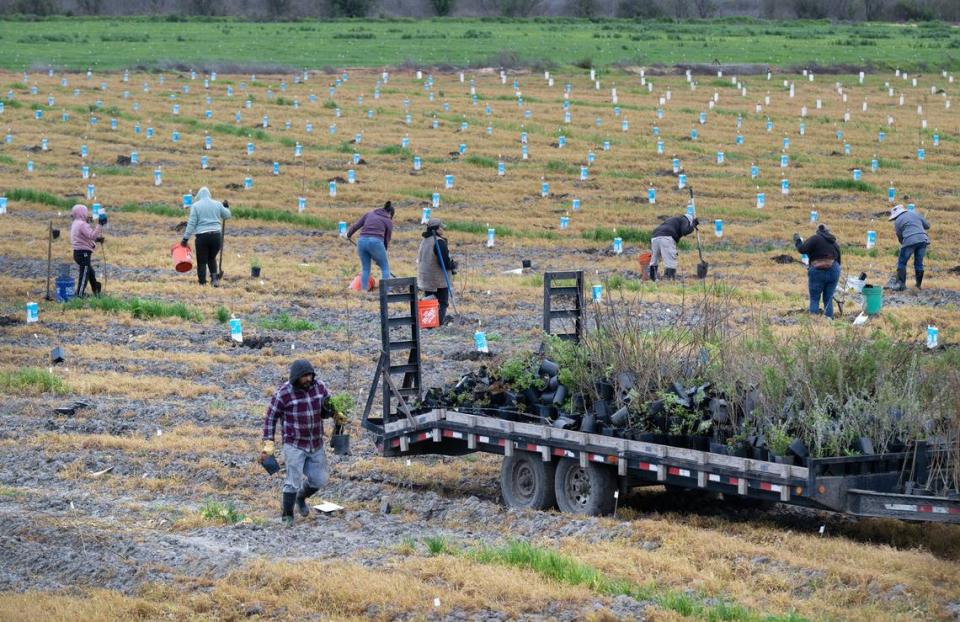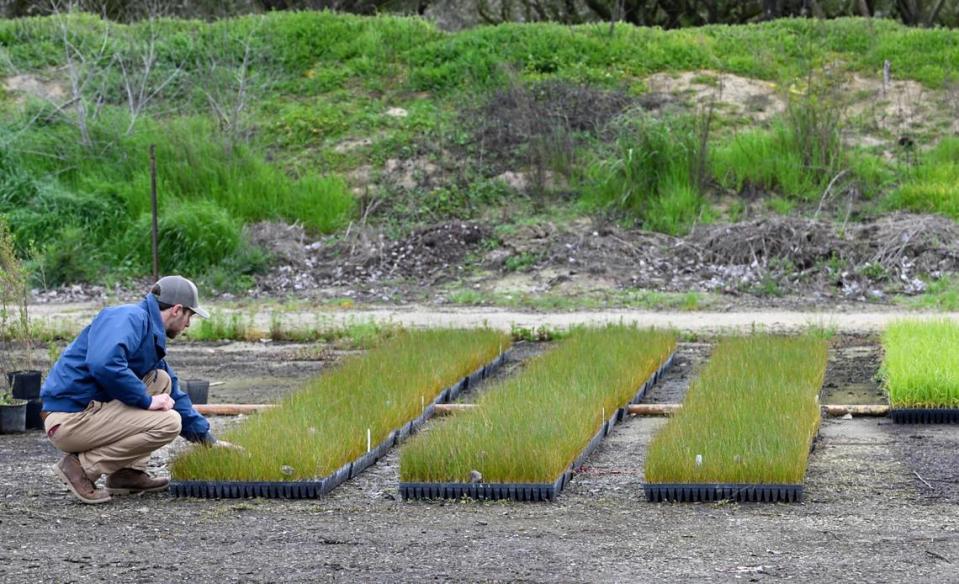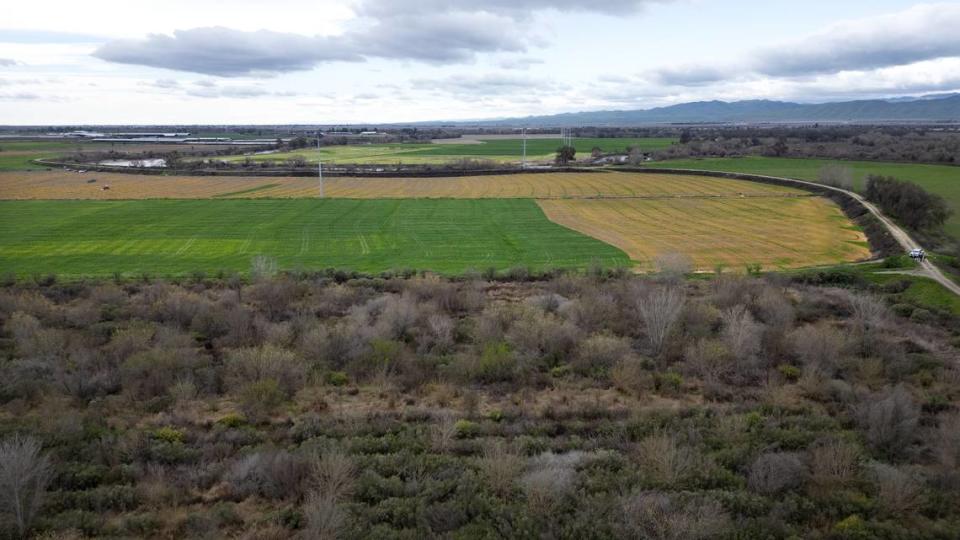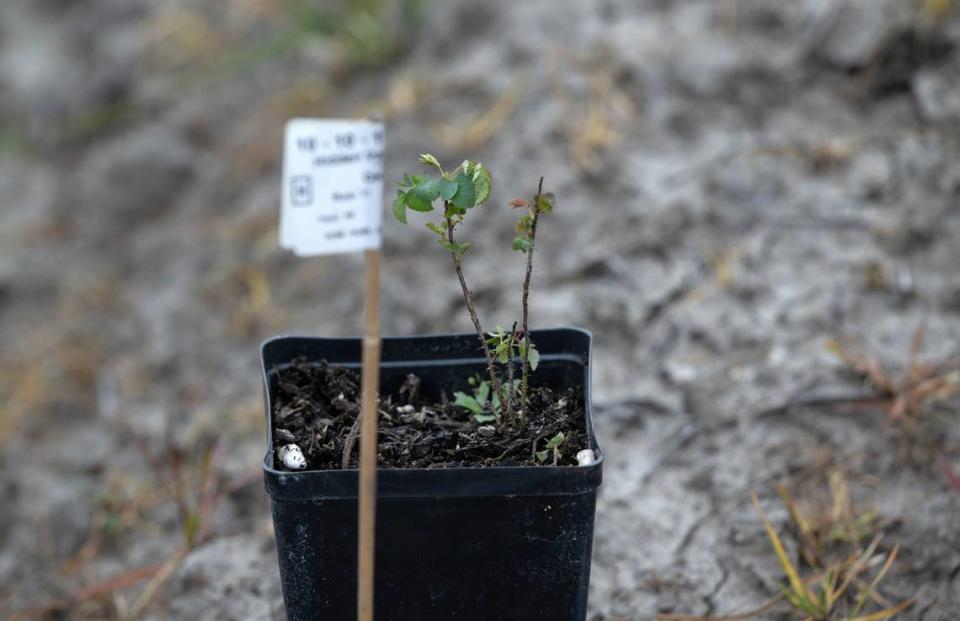Restored floodplain has thrived at Dos Rios, southwest of Modesto. This area is next
Just south of Dos Rios Ranch, a much-praised effort at river restoration, another such project is taking root.
It will add about 380 acres of floodplain and other habitat to the 1,600 acres at Dos Rios. They are near the confluence of the Tuolumne and San Joaquin rivers, about eight miles southwest of Modesto.
The state-funded project, totaling about $20.8 million, is on the former Hidden Valley Dairy. Annual feed crops are giving way to oaks, cottonwoods, willows and other native plants.
The floodplain will take on high river flows that otherwise could threaten nearby Grayson and downstream towns. The standing water could recharge the aquifer below for use during droughts. The place could offer food and shelter to fish, birds, mammals and other creatures.

The nonprofit River Partners is restoring Hidden Valley on a contract with the California Department of Water Resources. The group also did Dos Rios over the past decade with help from the Tuolumne River Trust and other entities.
Supporters say such projects are much cheaper and faster than building or expanding dams for flood control. It is “engineering with nature,” said Steve Rothert, a leader in the effort at DWR, in a Feb. 21 phone interview.
“Nature knows what to do, and with the right conditions, it will come roaring back,” he said.
Rothert is manager of the Division of Multi-Benefit Initiatives at DWR. He said Dos Rios has been “an exciting, exemplary project” that should be copied elsewhere.
The benefits can include recreation. Dos Rios will become a new state park by summer, thanks to about $5 million in separate funding.
Farmworkers lend a hand
The Modesto Bee got a Feb. 29 tour of Hidden Valley from River Partners field manager Austin Stevenot and Neil Wilson, senior restoration science ecologist. They work out of the Modesto branch office for the Chico-based group.
The planting began in December and is expected to run through March. It means temporary jobs for farmworkers, hired by a labor contractor during an otherwise slow time of year.
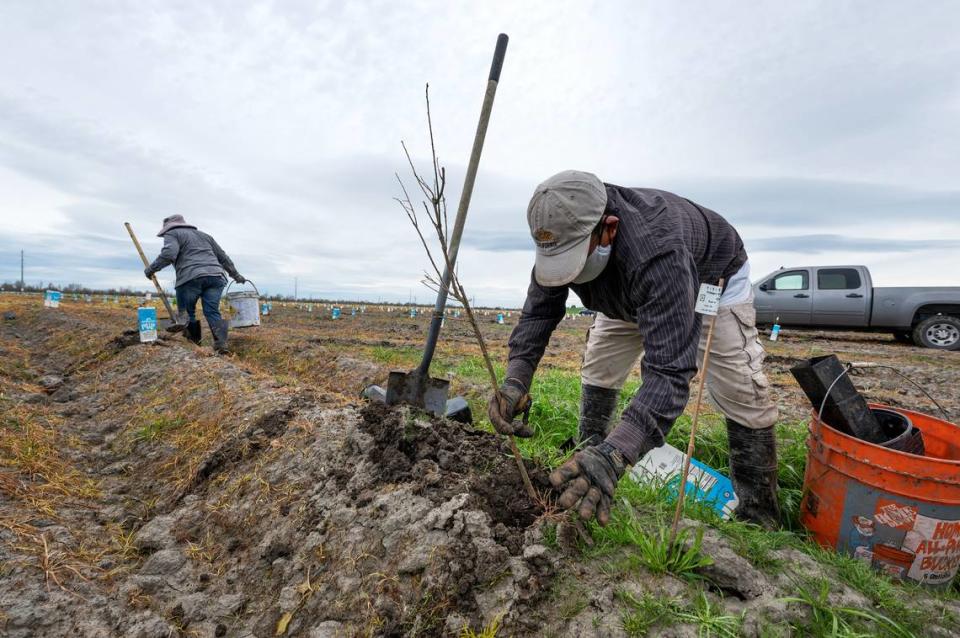
About 40 were on hand when The Bee visited on that chilly Thursday morning. They dug holes with shovels and laid in nursery-raised trees from gallon pots. An empty milk carton protects each of them from pests and weather.
Wilson and Stevenot watched the crew from atop a levee and predicted success in short order.
“In the early years, the cottonwoods and willows will really take off,” Wilson said. “The cottonwoods especially. We can see them putting on 10 feet a year.”
Site will get 80,000 trees and other plants
River Partners has a detailed plan for each of its restorations, using trees, brush and grasses suited to the site. Hidden Valley’s canopy will have three species of willow, along with one each of oak, cottonwood, elder and ash. Below them will grow native species such as deerbrush, blackberry, rose, currant, elderberry and mulefat.
About 80,000 nursery plants in all will go into the ground, and about 2,500 pounds of grass and wildflower seeds.
A few areas will be open rather than forested, welcoming to sandhill cranes and certain other wildlife. The floodplain will have a few mounds for riparian brush rabbits, an endangered species that needs such refuge during floods.
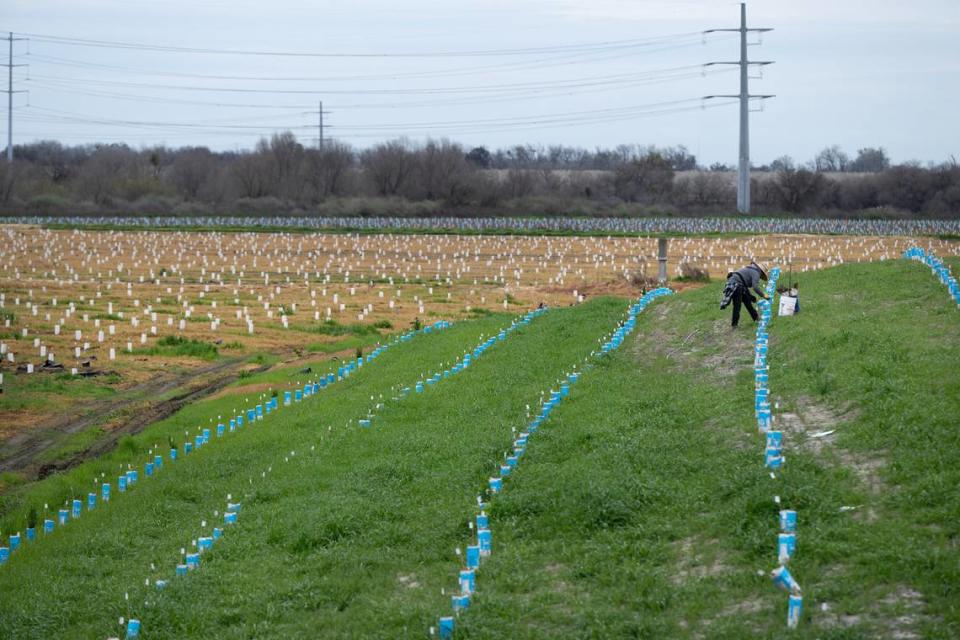
Some of the trees will die over the next few decades, and that’s just fine in a restored forest. The fallen trees provide homes for animals and are decomposed by microbes to enrich the soil. Beavers do their part by gnawing on trunks, Stevenot said.
The planted fields will be irrigated for three years, then left to survive on soil moisture from rain and excess river flows. The funding includes study by DWR on possibly cutting through part of a levee to aid water movement.
The lower stretches of Central Valley rivers used to flood extensively each winter and spring. Only about 5% remains today with most of the water diverted to farms and cities.
“The big goals of the project are to create habitat for plants and wildlife that are short on those options here ...,” Wilson said, “and to open up the site to flood waters during peak flood season periods.”
How the funding breaks down
The $20.8 million for Hidden Valley includes $10.3 million to acquire the site and $10.5 million for the restoration. DWR provided $6.3 million toward the purchase, and the rest came from the California Wildlife Conservation Board. The site totals 497 acres, including roads and other areas not suited for planting.
Media around the nation reported on how Dos Rios eased the flood pressure during last year’s abundant storms. It has been supplemented by the 285-acre Grayson Riverbend Preserve, where work began in 2022.
The three efforts total about 2,400 acres, but only Dos Rios will be open to the public for now. The others could become part of the San Joaquin River National Wildlife Refuge, which stretches across about 7,500 acres.
